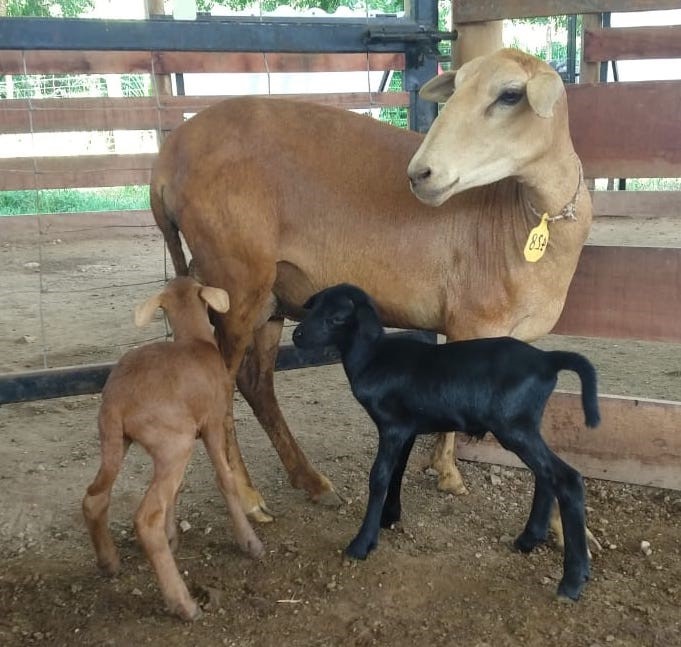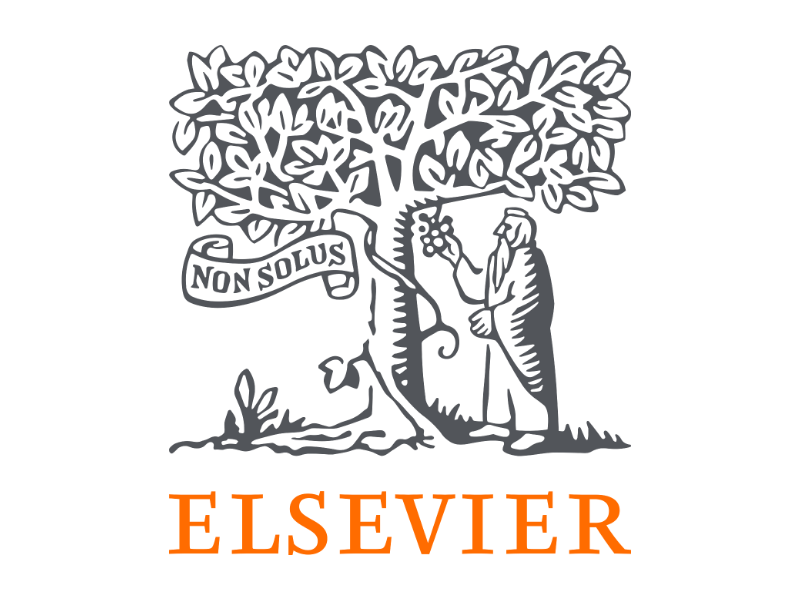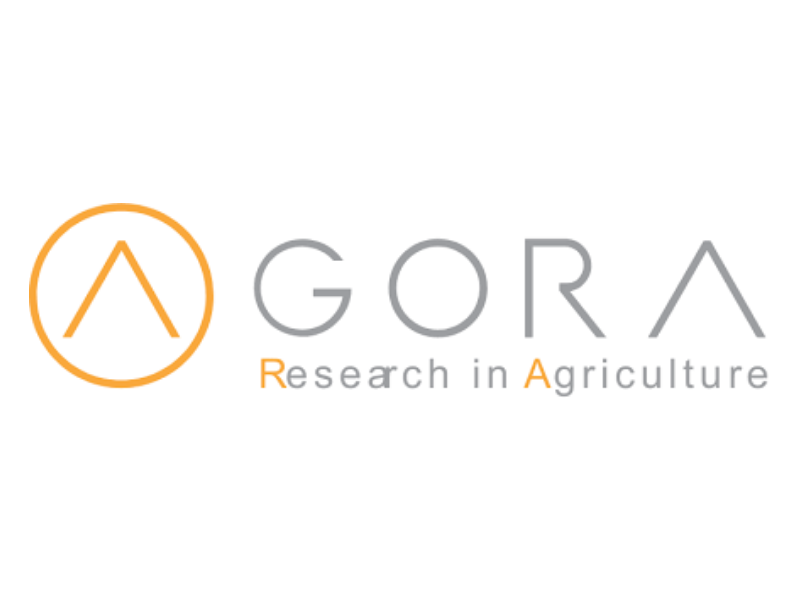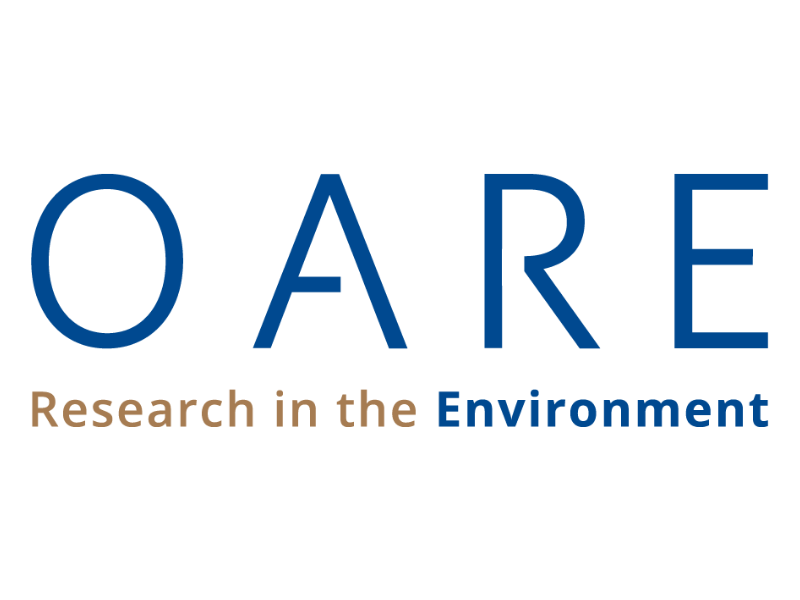Variación genética en dos genes candidatos contra parásitos gastrointestinales en Ovinos de Pelo Colombiano
Genetic variation in two candidate genes against gastrointestinal parasites in Colombian Hair Sheep


Esta obra está bajo una licencia internacional Creative Commons Atribución-NoComercial-CompartirIgual 4.0.
Mostrar biografía de los autores
Objetivo. Caracterizar dos polimorfismos genéticos tipo SNP en los genes GLI1 (rs411868094) y IL20RA (rs419463995) candidatos a la resistencia contra parásitos gastrointestinales en dos biotipos de ovinos de pelo colombiano. Materiales y métodos. Del banco de ADN del laboratorio de Genética Animal de la Universidad de Sucre, se analizaron 167 muestras de ovino de pelo colombiano (OPC), pertenecientes a los biotipos Etíope (n=94) y Sudán (n=73), mediante PCR y secuenciamiento bidireccional dos SNPs en los genes GLI1 (T>G) y IL20RA (G>A). Se calcularon las frecuencias alélicas y genotípicas, la heterocigocidad observada (Ho) y esperada (He), el índice F y las desviaciones del equilibrio de Hardy-Weinberg (EHW) con el programa GENALEX versión 6.5. Resultados. Para el gen GLI1 para todo el OPC las frecuencias genotípicas promedio fueron 0.155±0.07, 0.370±0.07 y 0.475±0.07 para GG, GT y TT, respectivamente. En el biotipo Etíope, se encontraron las frecuencias más altas del genotipo GG. Para el gen IL20RA en todo el OPC, los genotipos AA y AG tuvieron similar frecuencia (0.465±0.03) y el genotipo GG mostró la frecuencia más baja (0.110±0.01). Conclusiones. Las variantes genéticas analizadas fueron polimórficas. Según los reportes de literatura, los alelos de interés por su mejor desempeño contra los parásitos gastrointestinales, tuvieron baja frecuencia en el gen GLI1, pero alta frecuencia en el IL20RA.
Visitas del artículo 415 | Visitas PDF
Descargas
- Vivas N, Vincenzo L, Muñoz J, Moris B, Álvarez L. Diversidad genética de ovinos criollos colombianos. Rev MVZ Córdoba. 2020; 25(3):e2185–e2185. https://doi.org/10.21897/rmvz.2185
- Wanjala G, Bagi Z, Kusza S. Meta-Analysis of Mitochondrial DNA Control Region Diversity to Shed Light on Phylogenetic Relationship and Demographic History of African Sheep (Ovis aries) Breeds. Biology. 2021; 10(8):762. https://doi.org/10.3390/biology10080762
- Arevalo A, Correa G. Tecnología en la ovinocultura colombiana: estado del arte. Rev Cienc Anim. 2013; 1(6):125–142. https://ciencia.lasalle.edu.co/ca/vol1/iss6/10
- Hernández D, Montes D, De la Ossa J. Asociación del polimorfismo FecB con la prolificidad natural del Ovino de Pelo Colombiano. Rev MVZ Córdoba. 2020; 25(1):1–6. https://doi.org/10.21897/rmvz.1771
- Al Kalaldeh M, Gibson J, Duijvesteijn N, Daetwyler H, MacLeod I, Moghaddar N, et al. Using imputed whole-genome sequence data to improve the accuracy of genomic prediction for parasite resistance in Australian sheep. Genet Sel Evol. 2019; 51(1):32. https://doi.org/10.1186/s12711-019-0476-4
- Al Kalaldeh M, Gibson J, Lee S, Gondro C, van der Werf J. Detection of genomic regions underlying resistance to gastrointestinal parasites in Australian sheep. Genet Sel Evol 2019; 51(1):37. https://doi.org/10.1186/s12711-019-0479-1
- Atlija M, Arranz J, Martinez-Valladares M, Gutiérrez-Gil B. Detection and replication of QTL underlying resistance to gastrointestinal nematodes in adult sheep using the ovine 50K SNP array. Genet Sel Evol. 2016; 48(1):4. https://doi.org/10.1186/s12711-016-0182-4
- Díaz-Anaya A, Chavarro-Tulcán G, Pulido-Medellín M, García-Corredor D, Vargas-Avella J. Estudio coproparasitológico en ovinos al pastoreo en Boyacá, Colombia. Rev Salud Anim. 2017; 39(1):1–8. http://revistas.censa.edu.cu/index.php/RSA/article/view/884
- Kahn LP, Woodgate RG. Integrated parasite management: Products for adoption by the Australian sheep industry. Vet Parasitol. 2012; 186(1):58–64. https://doi.org/10.1016/j.vetpar.2011.11.046
- Ilangopathy M, Palavesam A, Pandian S, Muthusamy R. Economic Impact of Gastrointestinal Nematodes on Meat Production from Sheep. Int J Livest Res. 2019; 9(10):44–48. https://10.5455/ijlr.20190331051814
- Scala A, Pipia AP, Dore F, Sanna G, Tamponi C, Marrosu R, et al. Epidemiological updates and economic losses due to Taenia hydatigena in sheep from Sardinia, Italy. Parasitol Res. 2015; 114(8):3137–3143. https://doi.org/10.1007/s00436-015-4532-x
- Kaplan RM. Biology, Epidemiology, Diagnosis, and Management of Anthelmintic Resistance in Gastrointestinal Nematodes of Livestock. Vet Clin Food Anim Pract. 2020; 36(1):17–30. https://doi.org/10.1016/j.cvfa.2019.12.001
- Periasamy K, Pichler R, Poli M, Cristel S, Cetrá B, Medus D, et al. Candidate Gene Approach for Parasite Resistance in Sheep – Variation in Immune Pathway Genes and Association with Fecal Egg Count. PLOS ONE. 2014; 9(2):e88337. https://doi.org/10.1371/journal.pone.0088337
- Wilkie H, Riggio V, Matika O, Nicol L, Watt K, Sinclair R, et al. A candidate gene approach to study nematode resistance traits in naturally infected sheep. Vet Parasitol. 2017; 243:71–74. https://doi.org/10.1016/j.vetpar.2017.06.010
- Becker GM, Davenport KM, Burke JM, Lewis RM, Miller JE, Morgan JLM, et al. Genome-wide association study to identify genetic loci associated with gastrointestinal nematode resistance in Katahdin sheep. Anim Genet. 2020; 51(2):330–335. https://doi.org/10.1111/age.12895
- Ngere L, Burke JM, Morgan JLM, Miller JE, Notter DR. Genetic parameters for fecal egg counts and their relationship with body weights in Katahdin lambs. J Anim Sci. 2018; 96(5):1590–1599. https://doi.org/10.1093/jas/sky064
- Notter D, Ngere L, Burke J, Miller J, Morgan J. Genetic parameters for ewe reproductive performance and peri-parturient fecal egg counts and their genetic relationships with lamb body weights and fecal egg counts in Katahdin sheep. J Anim Sci. 2018; 96(5):157915–89. https://doi.org/10.1093/jas/sky100
- Hu Z-L, Park C, Reecy J. Building a livestock genetic and genomic information knowledgebase through integrative developments of Animal QTLdb and CorrDB. Nucleic Acids Res. 2019; 47(D1):701–710. https://doi.org/10.1093/nar/gky1084
- Pickering N, Auvray B, Dodds K, McEwan J. Genomic prediction and genome-wide association study for dagginess and host internal parasite resistance in New Zealand sheep. BMC Genomics. 2015; 16(1):958. https://doi.org/10.1186/s12864-015-2148-2
- Excoffier L, Lischer, H. 2010. Arlequin suite ver 3.5: A new series of programs to perform population genetics analyses under Linux and Windows. Molecular Ecology Resources. 2010; 10:564-567. https://10.1111/j.1755-0998.2010.02847.x
- Benavides M, Sonstegard T, Kemp S, Mugambi J, Gibson J, Baker R, et al. Identification of Novel Loci Associated with Gastrointestinal Parasite Resistance in a Red Maasai x Dorper Backcross Population. PLOS ONE 2015; 10(4):e0122797. https://doi.org/10.1371/journal.pone.0122797
- Aguerre S, Jacquiet P, Brodier H, Bournazel JP, Grisez C, Prévot F, et al. Resistance to gastrointestinal nematodes in dairy sheep: Genetic variability and relevance of artificial infection of nucleus rams to select for resistant ewes on farms. Vet Parasitol. 2018; 256:16–23. https://doi.org/10.1016/j.vetpar.2018.04.004
- Berton M, Silva R, Carvalho F, Chiaia H, Oliveira P, Eler JP, et al. Genetic parameter estimates for gastrointestinal nematode parasite resistance and maternal efficiency indicator traits in Santa Inês breed. J Anim Breed Genet. 2019; 136(6):495–504. https://doi.org/10.1111/jbg.12424
- González-Garduño R, Mendoza-de Gives P, López-Arellano ME, Aguilar-Marcelino L, Torres-Hernández G, Ojeda-Robertos NF, et al. Influence of the physiological stage of Blackbelly sheep on immunological behaviour against gastrointestinal nematodes. Exp Parasitol. 2018; 193:20–26. https://doi.org/10.1016/j.exppara.2018.08.003
- Zhang R, Liu F, Hunt P, Li C, Zhang L, Ingham A, et al. Transcriptome analysis unraveled potential mechanisms of resistance to Haemonchus contortus infection in Merino sheep populations bred for parasite resistance. Vet Res. 2019; 50(1):7. https://doi.org/10.1186/s13567-019-0622-6
- Greer AW, McKenzie JL, McAnulty RW, Huntley JF, McNeilly TN. Immune development and performance characteristics of Romney sheep selected for either resistance or resilience to gastrointestinal nematodes. Vet Parasitol. 2018; 250:60–67. https://doi.org/10.1016/j.vetpar.2017.12.013
- McBean D, Nath M, Kenyon F, Zile K, Bartley D, Jackson F. Faecal egg counts and immune markers in a line of Scottish Cashmere goats selected for resistance to gastrointestinal nematode parasite infection. Vet Parasitol. 2016; 229:1–8. https://doi.org/10.1016/j.vetpar.2016.08.027
- Niciura SCM, Cruvinel GG, Moraes CV, Chagas ACS, Esteves SN, Benavides MV, et al. In vivo selection for Haemonchus contortus resistance to monepantel. J Helminthol. 2020; 94:e46. https://doi.org/10.1017/S0022149X19000221
- Herrera L, Rios L, Zapata R. Frecuencia de la infección por nemátodos gastrointestinales en ovinos y caprinos de cinco municipios de Antioquia. Rev MVZ Córdoba. 2013; 18(3):3851–3860. https://doi.org/10.21897/rmvz.157
- Zapata R, Velásquez R, Herrera L, Rios O, Polanco D. Prevalencia de Nematodos Gastrointestinales en Sistemas de Producción Ovina y Caprina bajo Confinamiento, Semiconfinamiento y Pastoreo en Municipios de Antioquia, Colombia. Rev Investig Vet Perú. 2016; 27(2):344–354. https://doi.org/10.15381/rivep.v27i2.11647
- Ensuncho-Hoyos C, Castellano-Coronado A, Maza-Ángulo L, Bustamante-Yánez M, Vergara O. Prevalencia y grado de infección de nematodos gastrointestinales en ovinos de pelo en pastoreo de cuatro municipios de Cordoba, Colombia. Rev Científica FCV-LUZ. 2014; 24(5):414–420. https://www.produccioncientificaluz.org/index.php/cientifica/article/view/10592
- Hui C, Angers S. Gli Proteins in Development and Disease. Annu Rev Cell Dev Biol. 2011; 27(1):513–537. https://doi.org/10.1146/annurev-cellbio-092910-154048
- Lama-Sherpa T, Lin V, Metge B, Weeks S, Chen D, Samant R, et al. Hedgehog signaling enables repair of ribosomal DNA double-strand breaks. Nucleic Acids Res. 2020; 48(18):10342–10352. https://doi.org/10.1093/nar/gkaa733
- Xavier G, Seppala M, Barrell W, Birjandi A, Geoghegan F, Cobourne M. Hedgehog receptor function during craniofacial development. Dev Biol. 2016; 415(2):198–215. https://doi.org/10.1016/j.ydbio.2016.02.009
- Rutz S, Wang X, Ouyang W. The IL-20 subfamily of cytokines — from host defence to tissue homeostasis. Nat Rev Immunol. 2014; 14(12):783–795. https://doi.org/10.1038/nri3766
- Raschia M, Donzelli M, Medus P, Cetrá B, Maizon D, Suarez V, et al. Single nucleotide polymorphisms from candidate genes associated with nematode resistance and resilience in Corriedale and Pampinta sheep in Argentina. Gene. 2021; 770:145345. https://doi.org/10.1016/j.gene.2020.145345
- Estrada-Reyes Z, Tsukahara Y, Amadeu R, Goetsch A, Gipson T, Sahlu T, et al. Signatures of selection for resistance to Haemonchus contortus in sheep and goats. BMC Genomics. 2019; 20(1):735. https://doi.org/10.1186/s12864-019-6150-y
- Yaro M, Munyard KA, Morgan E, Allcock RJN, Stear MJ, Groth DM. Analysis of pooled genome sequences from Djallonke and Sahelian sheep of Ghana reveals co-localisation of regions of reduced heterozygosity with candidate genes for disease resistance and adaptation to a tropical environment. BMC Genomics. 2019; 20(1):816. https://doi.org/10.1186/s12864-019-6198-8
- Gao W, Wen H, Liang L, Dong X, Du R, Zhou W, et al. IL20RA signaling enhances stemness and promotes the formation of an immunosuppressive microenvironment in breast cancer. Theranostics. 2021; 11(6):2564–2580. https://www.thno.org/v11p2564.htm
- Ekegbu U, Burrows L, Amirpour-Najafabadi H, Zhou H, Hickford J. Gene polymorphisms in PROP1 associated with growth traits in sheep. Gene. 2019; 683:41–46. https://doi.org/10.1016/j.gene.2018.10.024























